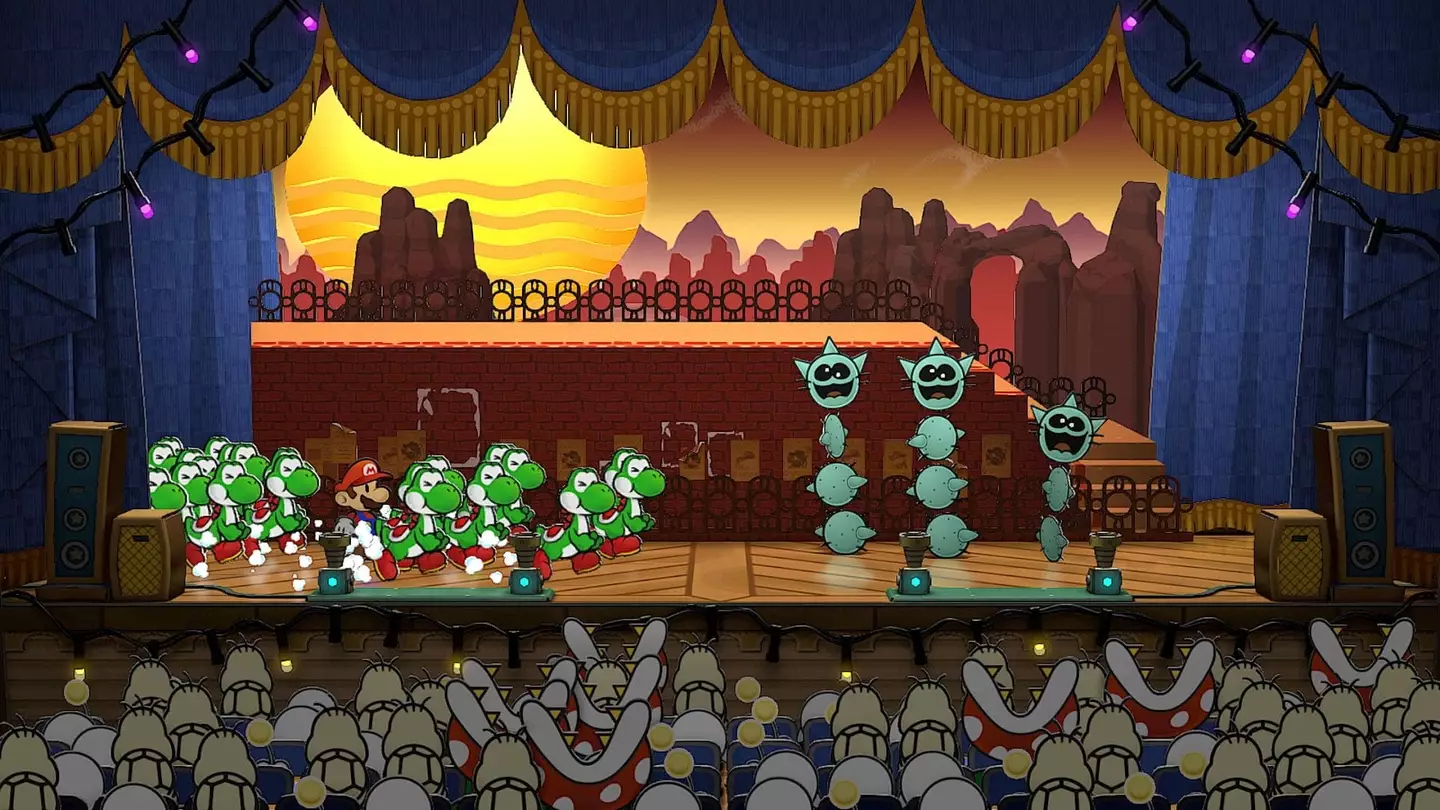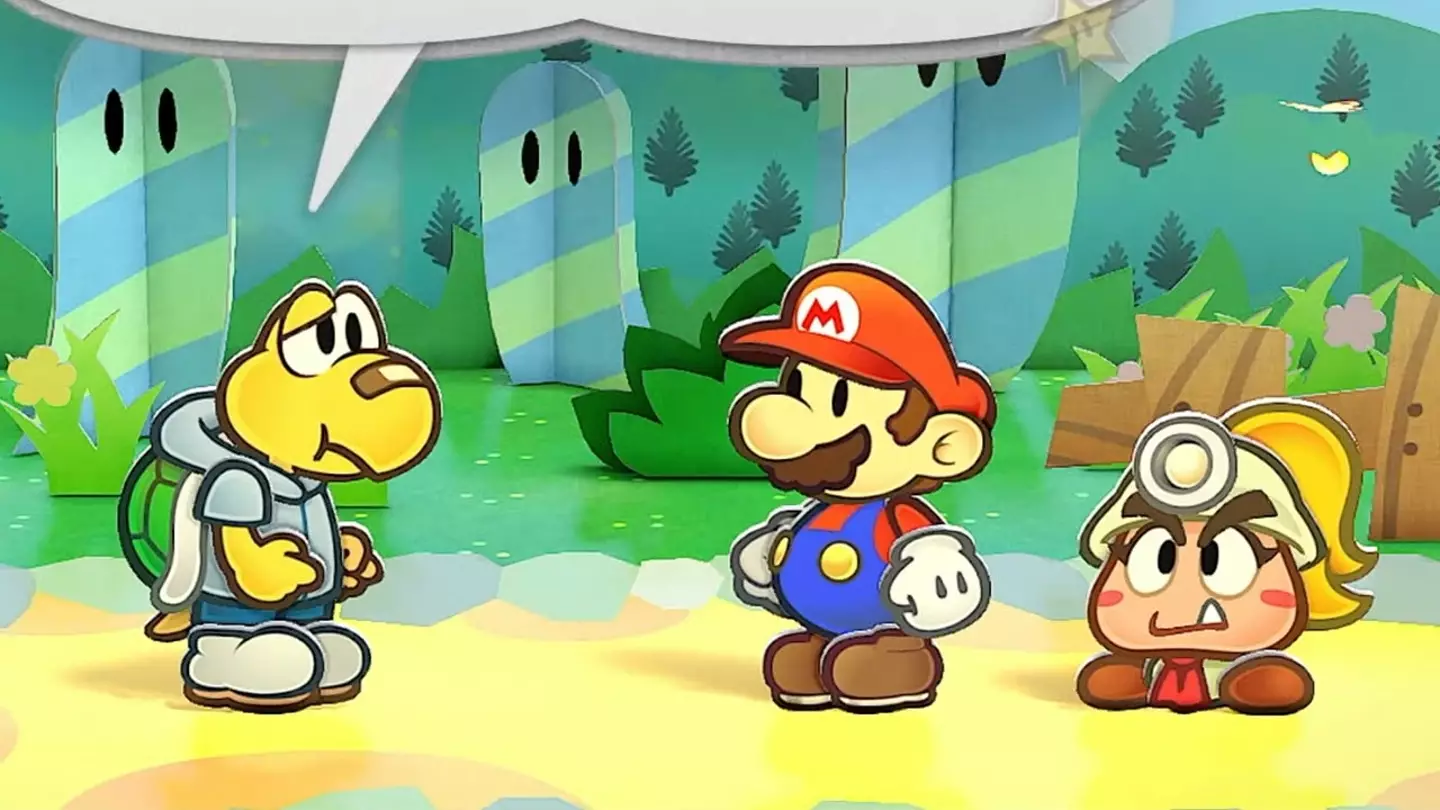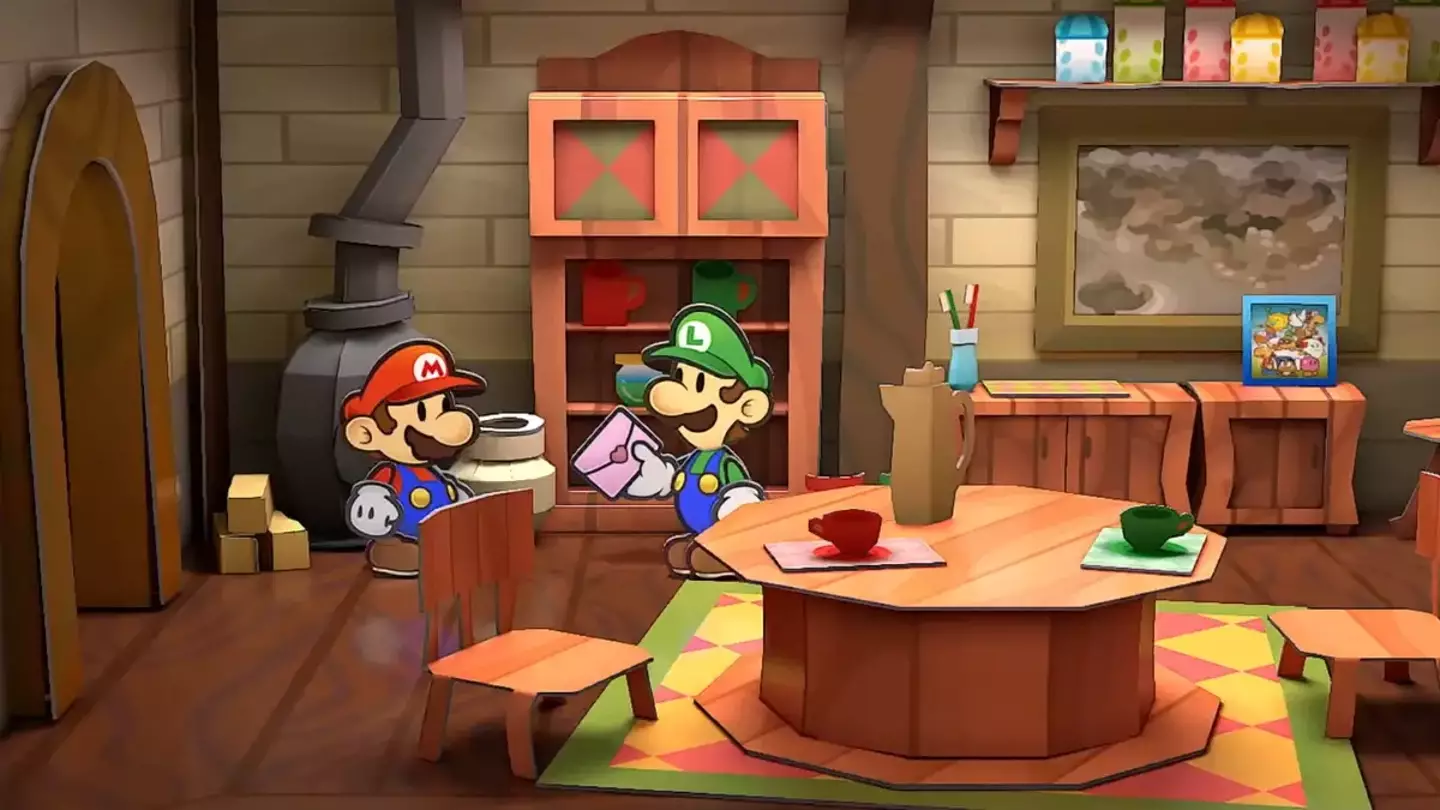
Paper Mario: The Thousand-Year Door’s remake on Nintendo Switch is everything it needed to be, and it’s still as top tier as it was in 2004.
It was a joy to play from start to finish, and while I feel more could have been done to modernise it, by the time I rolled credits I was just as impressed as when I finished the GameCube version.
Check out Paper Mario: The Thousand-Year Door below
The story has been left untouched since the original release. Peach finds an ancient treasure map revealing the location of seven Crystal Stars, sends it to Mario, gets kidnapped, and it’s up to Mario to save the day again.
This time however, he’s not alone, and he’s not accompanied by his brother Luigi either - though I wish he was. Instead, he’s joined by a colourful cast of companions he meets along the way, all of whom have their own stories, personalities and special abilities which I’ll get to in due time.
Advert
The story also regularly switches over to Peach and Bowser, who both have their own parts to play in the story, though the King of the Koopas seems to be more comic-relief than an actual threat out to thwart Mario.
In terms of writing the majority has stayed exactly the same, with only a few exceptions. This is great given the comedy of the Paper Mario games is such a fundamental part of the series’ charm as a whole. Fourth-wall breaking, topical humour, and straight-up silliness are injected into the dialogue, and none of it has aged a day.
One of the biggest changes to the adventure though, and one I feel is well-worth mentioning, is Vivian’s transgender story, which has finally been localised for a Western audience.
For those who aren’t aware, one of the companions in the game, a ghost girl called Vivian, is transgender. InJapanese version of the original game, she remarks how her evil sisters teased her for it. When the original game was localised for the West, this bit of story was altered to have no mention of Vivian’s past, so you’d be forgiven if this is the first you’ve heard about it. Fortunately this remake does include that bit of story dialogue, and while it could be perceived as a minor change from the original, I think it’s important that it was included, and in such a natural way too.
Advert

A few other changes from the original version are seen through gameplay. For starters, you can now switch your chosen companion with a press of a button, bringing up a wheel to select who you want to accompany you. In the original you’d have to navigate a pause menu, and while I appreciate the change, it doesn’t really save you any time when swapping out your characters. The soundtrack has been remade, though there’s a new badge that changes it back to the GameCube tracks, which this old-school fan adored.
Apart from those minor tweaks, the only thing that’s really changed are the visuals. Paper Mario: The Thousand-Year Door on the Nintendo Switch looks gorgeous, and while the game is restricted to 30fps, compared to the GameCube’s 60, the change isn’t noticeable at all.
The art style of the original game has aged gracefully over the years, but the remake dials the visual splendour up to 11. The picture book aesthetic is exacerbated with heaps of colour, shadows to give the world depth, and I could write a whole feature on Mario's new expressions and animations.
Advert
Gone are the days when Mario simply nods or shakes his head, the powerhouse plumber now emotes with his hands, drops his jaw and frantically waves his arms when threatened. He may not be able to speak, but you know damn well what he’s feeling, and if you’re vibing with the story as Nintendo intended, you should be feeling the same way.

As an RPG though, the real bread and butter of Paper Mario: The Thousand-Year Door is the combat, and much like the rest of the original game it hasn’t aged a day. The first two Paper Mario games placed a unique spin on turn-based RPG combat by giving the player the chance to boost their attack and defence with a well-timed button press. This keeps you fully engaged in the combat on your first battle all the way to your last, as you’re always motivated to squeeze out that extra bit of damage, or cling to those last few life points.
Learning and perfecting your timing for the various attacks you and your allies can do feels fantastic, and once you’re a few chapters into the game you’ll feel nothing short of unstoppable. You can also pull off a high risk, but high reward superguard, which is much harder to time properly but will see you take no damage whatsoever, in addition to damaging the enemy who tried to get you.
Advert
Enemy variation is also great, with a solid mix of enemies that require specific moves to put down. For example enemies with wings cannot be hit with ground attacks, so Mario will have to jump if he wants to bring them down a peg, whereas some enemies are spiked and best dispatched with the hammer instead. Learning what moves are effective against which enemies is valuable information, but it never feels daunting and relies more on your common sense than memorising a long list of weaknesses.
Now, as a Mario-based RPG, The Thousand-Year Door is incredibly accessible to those new to the series, or new to RPGs in general. Less confident players can take advantage of a wide range of items and badges to make combat easier, with some badges specifically making the timing of attack and guard commands more forgiving. Items used in combat that restore health, deal damage, change your stats etc can be bought from several shops for coins, a plentiful currency that you’ll very rarely have too little off provided you’re not splurging every chance you get.

By far the best new feature though is Goombella’s hints. By pressing one of the triggers Goombella will chime in and remind you what you’re supposed to be doing, and sometimes give you a clue as to where to look or how to achieve your objective. She won’t outright tell you the way forward but her advice was sound, and it did a good job at steering me in the right direction for parts of the game I couldn’t quite remember as well. The best use of the hint system though is when you’ve put the game down for an extended period and forgotten where you’re up to, as seeing “Look for X at Rogueport” after coming back to the game after a day or two got me straight back into the objective with no fuss or lost time.
Advert
In short the gameplay is second to none, and it feels just as much fun in the first couple of minutes as it does in the final few hours. However gameplay aside what Paper Mario: The Thousand-Year Door truly nails is the way it makes you feel while playing.
Whether you’re a returning fan or someone new to the series, you’ll feel enchanted exploring the game’s multiple worlds, each with their own distinct styles and inhabitants. You’ll climb to the top of an ancient tree, battle your way to the top in an arena above the clouds and meet the pig-faced inhabitants of a village in eternal twilight. You’ll meet a variety of faces each with their own stories to tell, many of which will be instrumental in helping you find your way, so it’s a good idea to speak to everyone you can find.
This extends to your party, and while your allies don’t take up too much of the spotlight they all have a part to play in the performance and you really start with feel and emphasise with their goals and aspirations. I was fully invested in Vivian finding her self-confidence, just as I was seeing the Koopa Trooper, Koops, overcome his fears to become a hero his family can be proud of. By the end of the game you have a sizeable team of friends to help you on your quest, and none of them feel out of place or unneeded.

Now, while I loved Paper Mario: The Thousand-Year Door and have overwhelmingly positive feelings about it, I can’t help but feel a little bit of disappointment over the lack of bonus content.
In the original, Mario can find his brother Luigi hanging around in Rogueport with his own cast of companions, on a journey to find The Marvellous Compass. It’s mainly comic-relief, as Luigi will go into a long explanation on where he’s up to with his quest which promptly sees Mario fall asleep while talking to him. I know for a fact that many players were hoping to see this quest fully realised as a bit of side content, and I was right there with them.
Unfortunately, it simply wasn’t meant to be, as there’s no expansion on Luigi’s quest or even a hint that it could become its own spin-off sometime in the future. That was the only thing that stung a bit during my playthrough.
Overall though, Paper Mario: The Thousand-Year Door accomplishes what it sets out to do: remake and revamp a beloved Nintendo classic for a new audience on the Nintendo Switch. If you were a fan of last year’s Super Mario RPG, this is undoubtedly the next step in your Mario role-playing journey, and it’s accessible to a wide variety of gamers. It’s a must-play adventure from start to finish, and one I couldn’t have been happier to embark on again.

Pros: Stunning remade visuals and sound, expertly written story and characters, engaging combat that never outstayed its welcome, new additions like the hint system make it even more accessible to new players
Cons: No Paper Luigi: The Marvellous Compass feels like a crime
For fans of: Super Mario, Final Fantasy, Bug Fables
10/10: Perfect
Paper Mario: The Thousand-Year Door is available on 23 May exclusively for Nintendo Switch. Find a complete guide to GAMINGbible's review scores here.
Topics: Nintendo, Nintendo Switch, Super Mario, Mario, Reviews